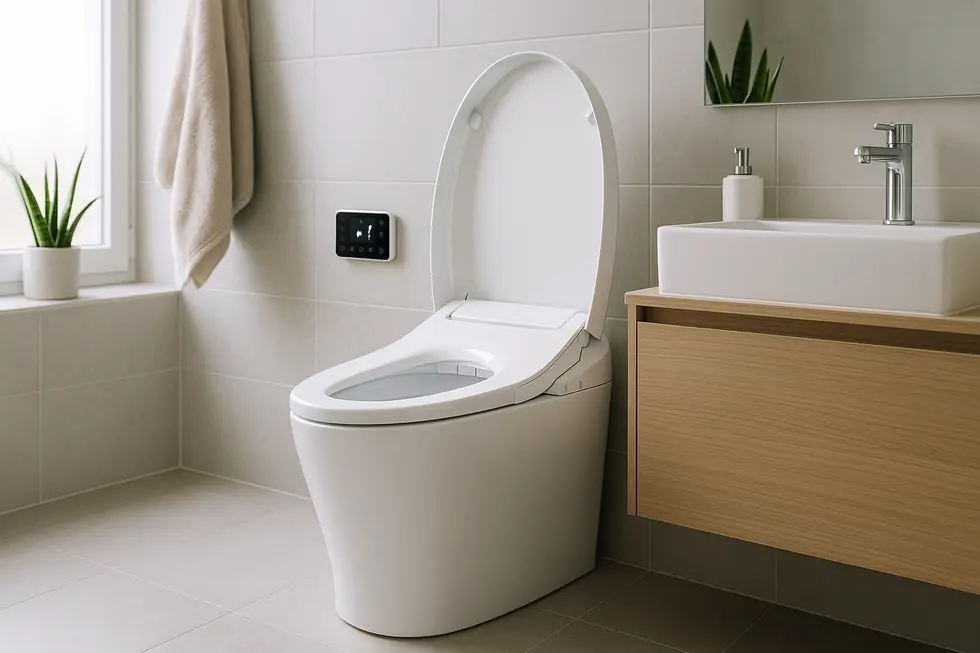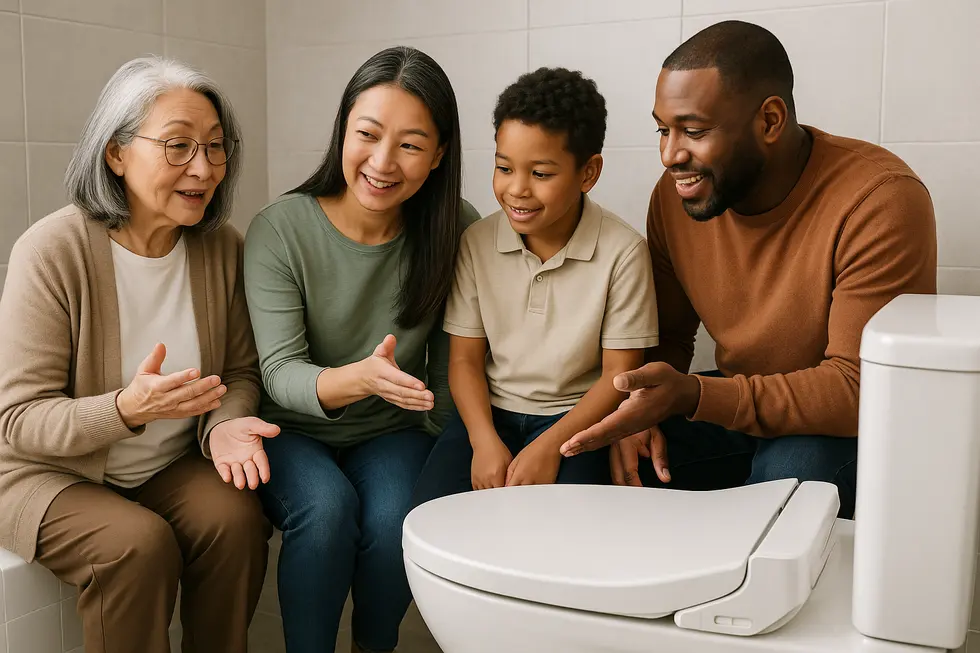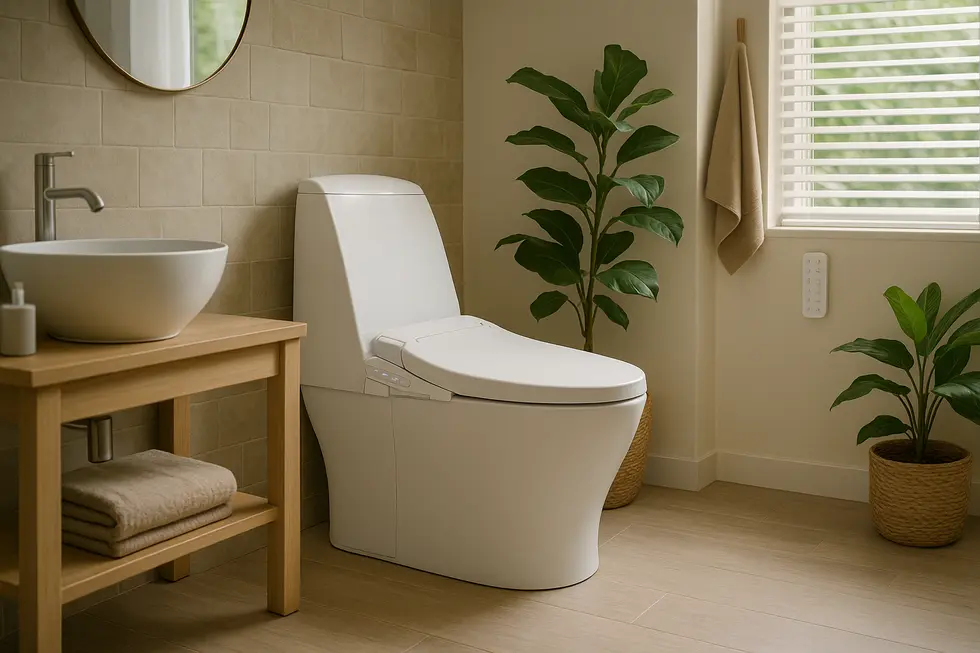Bidet Seat
Elevating Bathroom Standards: Exploring the Best Bidet Toilets for Families
Innovative bidet toilets have rapidly become a staple in family bathrooms across the globe, reflecting advancements in technology and changes in societal attitudes. These modern fixtures enhance hygiene and offer eco-friendly solutions that appeal to families who prioritize health and sustainability. This article examines how technological innovations drive the development of top-rated bidet toilets, explores economic trends that impact consumer preferences, and discusses societal factors influencing their adoption. Together, these insights provide a comprehensive understanding of why bidet toilets have gained popularity among families.
From Warm Water to Voice Control: The Tech Breakthroughs Powering Today’s Top-Rated Bidet Toilets

The modern bidet toilet is no longer a simple spray nozzle bolted beside porcelain. Engineers have woven together plumbing, electronics, and sensor technology to create fixtures that feel closer to luxury spas than to yesterday’s bathroom hardware. Central to this shift is precision water control. Digital valves now mix incoming hot and cold lines in real time, keeping temperature and pressure steady even when someone starts a shower elsewhere in the house. The result is a gentle, consistently warm cleanse—far more comforting and hygienic than the unpredictable gush of earlier washlets.
Comfort extends beyond water. Carbon-fiber heating films hidden beneath slim seats reach body temperature in seconds, while low-noise air blowers provide hands-free drying that can be fine-tuned for strength and warmth. Many units remember these preferences for every household member. Approach the bowl and a proximity sensor lifts the lid to your saved profile; leave, and it closes, flushes, and begins an ozone-based deodorizing cycle that scrubs odors before they escape the ceramic.
Hygiene maintenance has advanced as well. A fine “pre-mist” coats the bowl before use, reducing the surface tension that lets waste stick. Afterward, a secondary spray combined with electrolyzed water disinfects the wand and inner bowl, meaning brushes and harsh chemicals gather dust beneath the sink. Some manufacturers add a micro-foam barrier that muffles sound and blocks splashback—small touches that quietly redefine bathroom dignity.
Layered onto these core upgrades is a growing mesh of connectivity. Bidet toilets now respond to voice assistants, integrate with household energy dashboards, and schedule eco-modes that drop seat temperature when everyone is asleep. By curbing toilet-paper consumption and optimizing water output, these technologies support greener lifestyles—benefits explored further in our guide to the benefits of bidet toilets. With every innovation, the category edges closer to a hands-free, self-maintaining fixture that anticipates needs rather than merely serving them, a trend confirmed by recent market analysis from Business Insider’s 2025.
From Luxury to Necessity: Economic and Market Forces Propelling Top-Rated Bidet Toilets

Rising demand for top-rated bidet toilets is less a fad than the visible tip of several powerful economic currents. First, heightened hygiene awareness since recent global health scares has recast the bathroom as a personal wellness zone. Households that once settled for dry paper now want water-based cleansing that actively removes bacteria and irritation. Industry analysts link this shift to a projected 12 % CAGR for smart seats through 2030, confirming that cleanliness concerns are translating into real purchasing power.
Technology is amplifying the trend. Manufacturers have poured research budgets into discreet sensors, adaptive spray algorithms, and self-sterilising nozzles that remember each user’s preferences. These refinements do more than dazzle; they shorten learning curves and lower the “ick” factor, persuading skittish first-time buyers that the upgrade is effortless. As features migrate downward in price tiers, even mid-range units now deliver comforts once reserved for high-end spas.
Sustainability provides an additional tail-wind. Bidets can trim household toilet-paper consumption by three-quarters, easing pressure on forests and municipal plumbing alike. Water efficiency has improved in parallel, with many models qualifying for green-building certifications. Younger homeowners, in particular, see the devices as a small but visible declaration of eco-responsibility. For anyone still weighing cost, the long-term saving on paper often offsets the initial outlay within three years.
Market segmentation shows the residential arena sprinting ahead while commercial sites lag. Families modernising master baths or outfitting accessory dwelling units treat the bidet as both indulgence and resale enhancer. Hotels and offices, conscious of capital budgets and plumbing downtime, adopt more cautiously, yet pilot installations are proving that contact-free flushing and self-clean cycles cut janitorial costs—evidence likely to accelerate wider rollouts.
Price remains the largest brake on adoption, especially in emerging markets. Here, affordable attachments and non-electric seats serve as on-ramps, letting consumers experience core benefits before trading up. Articles outlining comprehensive bidet toilet benefits are further easing sticker shock by emphasising health savings and environmental impact.
Taken together, these intersecting forces—health consciousness, smart-home innovation, sustainability, and tiered product strategies—are transforming the bidet toilet from niche indulgence into a mainstream fixture poised for rapid global expansion. (https://www.openpr.com/news/4084688/smart-bidet-toilet-seats-market-current-status-and-future)
From Luxury Abroad to Mainstream at Home: How Culture Shapes the Rise of Top-Rated Bidet Toilets

For decades, bidet toilets were quietly accepted as everyday essentials in much of Asia and southern Europe. Water-based cleansing aligns with cultural values that prize meticulous personal hygiene, so even modest apartments often include a heated, multifunction seat. In these regions, manufacturers compete less on whether people want a bidet and more on refinement—whisper-quiet dryers, self-sterilising nozzles, and intuitive controls are no longer indulgences; they are expectations.
North America has followed a slower path. The paper-centric mindset, reinforced by advertising and habit, long framed bidets as exotic. Yet that perception is dissolving. Wildfires, supply-chain shortages, and sustainability campaigns spotlighted the environmental cost of single-use paper, while health professionals praised water washing for reducing irritation and improving postpartum or senior care. As a result, more households are searching for the best bidet toilets for families, seeking options that combine hygiene, comfort, and ease of use for all age groups. Google Trends shows “how to install a bidet seat” searches quadrupling in five years, and leading home-improvement retailers now stock entire aisles of attachments and fully integrated smart toilets—many of which are marketed as the best bidet toilets for families thanks to their safety features and intuitive controls.
The transition is not purely ecological. Pandemic lockdowns turned bathrooms into mini-spas, and consumers discovered that warm seats, adjustable pressure, and deodorising systems provide daily comfort once reserved for high-end hotels. Still, cultural learning curves remain. New users often ask whether the spray is cold, where the water comes from, or if installation requires rewiring. Educational resources—store demos, influencer reviews, and articles explaining why many Western households still hesitate to install a bidet—help demystify the technology and accelerate adoption.
Price sensitivity also guides acceptance. Entry-level mechanical attachments under $100 introduce the concept without electricity, while advanced models with UV sanitisation and memory presets can exceed four figures. Households typically begin with an affordable add-on, then upgrade once the habit forms. Market data indicates that repeat purchases skew toward mid-range smart seats, suggesting functionality, not opulence, ultimately drives satisfaction.
As bidets migrate from niche to norm, cultural priorities—wellness, eco-friendliness, and tech-enabled convenience—intersect. The top-rated units of 2025 succeed because they respect regional expectations while offering features people did not realise they needed. In short, the bathroom fixture once viewed as foreign now mirrors global values of cleanliness and responsible consumption, a trend business analysts predict will continue to surge through the decade (Business Insider).
Final thoughts
Bidet toilets are setting new standards in family hygiene by integrating advanced technology, aligning with market trends, and gaining societal acceptance. As these fixtures become central to modern bathroom experiences, they address both practical and cultural needs, offering families sustainable and efficient hygiene solutions. The journey of bidet toilets from luxury to necessity showcases a significant shift towards cleanliness and environmental consciousness in family settings.
Experience a new standard of clean with PEGABidet—designed for comfort, safety, and independence. Join thousands who trust us to make personal care simple and dignified. Contact us at contact@pegabidet.com
About us
PEGABidet is a brand owned by L.A NEXTGEN LLC, based in California. We design intuitive, hygienic, and accessible bathroom solutions that prioritize safety, dignity, and independence. Our mission is to make personal care effortless and empowering for people at every stage of life.

